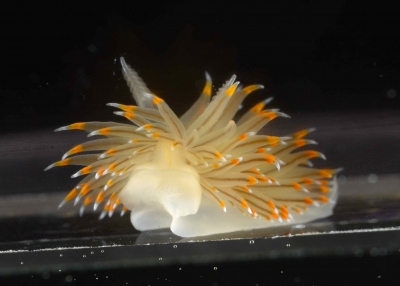
Plants, animals and even microbes that live on coral reefs have evolved a rich variety of defense strategies to protect themselves from predators. Some have physical defenses like spines and camouflage. Others have specialized behaviors – like a squid expelling ink – that allow them to escape. Soft-bodied or immobile organisms, like sponges, algae and sea squirts, often defend themselves with noxious chemicals that taste bad or are toxic.
Some animals that can’t manufacture their own chemical weapons feed on toxic organisms and steal their chemical defenses, having evolved resistance to them. One animal that does this is a sea slug that lives on the reefs surrounding Hawaii and dines on toxic Bryopsis algae. Marine scientists suspected the toxin is made by a bacterium that lives within the alga but have only just discovered the species responsible and teased apart the complex relationship between slug, seaweed and microbe.
Ultimately, noxious chemicals allow predators and prey to coexist on coral reefs, increasing their diversity. This is important because diverse ecosystems are more stable and resilient. A greater understanding of the drivers of diversity will aid in reef management and conservation.
As marine scientists, we too study chemical defenses in the ocean. Our laboratory group at the Georgia Institute of Technology explores how marine organisms use chemical signaling to solve critical problems of competition, disease, predation and reproduction. That’s why we were particularly excited by the discovery of this new bacterial species.
The discovery of a symbiosis between a bacterium and a seaweed to produce a chemical defense is noteworthy. There are many examples of bacteria living inside the cells of invertebrate animals (like sponges) and manufacturing toxic chemicals, but a partnership involving a bacterium living in the cells of a marine seaweed to produce a toxin is unusual.
The finding adds a new dimension to our understanding of the types of ecological relationships that produce the chemicals shaping coral reef ecosystems.
Credit : The Conversation
Picture Credit : Google




